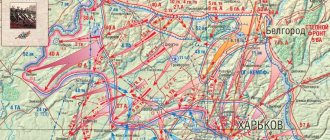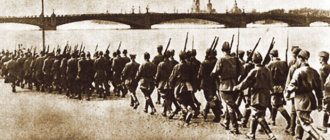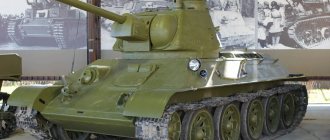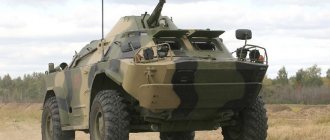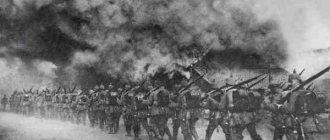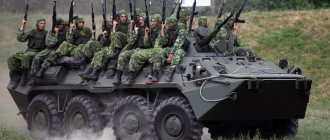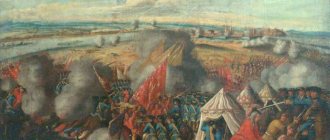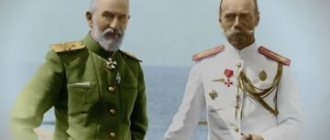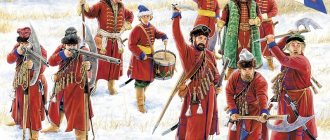This operation was carried out by the American military in order to prevent the Japanese from constructing an airfield on the northern coast of the island of Guadalcanal (Solomon Islands). The Japanese intended, with the help of aviation based at this airfield, to create a threat to the US Army in the area and protect their naval flank as they advanced towards Papua New Guinea.
On July 5, 1942, American reconnaissance aircraft reported that the Japanese had transferred some of their forces from Tulagi to the nearby larger island of Guadalcanal (about 150 km long and about 40 km wide) and were building an airstrip on its northern coast at Lunga Point . To impede enemy actions, American troops set off for the Solomon Islands.
Initial strengths of the parties
The overall leadership of the operation was entrusted to the commander of the forces of the South Pacific region, Vice Admiral R. Gormley. The forces entrusted to him included: 3 aircraft carriers, a battleship, 14 cruisers, 35 destroyers, 19 transports with units of the 1st division and one regiment of the 2nd marine division on board (19.5 thousand people). On the Japanese side, ships of the 8th Fleet located in Rabaul, an infantry battalion (about 400 people) and 2,700 people from the construction team located on the island were involved. Guadalcanal.
The struggle for Guadalcanal in art
- The war film chronicles the battles
of
Thin
Red Line from 1998, directed by Terrence Malick.
The screenplay of The Thin Red Line
was based on the novel by James Jones - A series was created based on the memories of veterans. Pacific region
, którego dwa pierwsze odcinki związane są z walkami na Guadalcanalu - Atmosferę bojów o Guadalcanal z japońskiego punktu widzenia oddaje poemat Gadarukanaru-sen Shishū
, napisany przez Yoshidę Kashichiego, podoficera, któremu udało się przeżyć zmagania na wyspie. Oto fragment:
“Nieważne jak daleko idziemy, Nie wiemy gdzie zdążamy Przeciskając się przez ciemną gęstwinę. Kiedy skończy się ten marsz? Ukrywamy się za dnia, A idziemy nocą Przez dżungle Guadalcanalu. Ryż się skończył, Jemy korzonki i trawę. Liście kryją szlak, a my gubimy drogę Potykając się i przewracając w błocie. Krew cieknie z naszych ran, bandaży nie ma; Muchy ją piją, a nam brak sił By je odganiać. Upaść i nie wstać więcej.
Ileż razy myślałem o samobójstwie..." [60]
American landing
The operation began early on the morning of August 7 with an aerial and artillery bombardment of the island. Following this, the landing began. By evening, up to 11 thousand soldiers of the 1st Marine Division under the command of General A. Vandegriff landed ashore. The next morning, after little resistance from the Japanese garrison, they occupied the partially completed air force base, calling it Henderson Field. Most of the Japanese who were on the island. Guadalcanal, mostly construction workers, fled into the jungle.
Trying to dislodge US troops from the island, on August 18, Japanese destroyers landed their troops on Guadalcanal - two advance detachments numbering 1,500 people, which attacked American units. However, without waiting for reinforcements, the Japanese advance units were quickly destroyed by the US Marines.
Importance of the Battle of Guadalcanal
Lockheed P-38 Lightning
This was the first US land campaign in the war against Japan. The campaign is waged in difficult terrain, in adverse weather conditions and against a stubborn enemy. This campaign also debunked the myth of the invincibility of the Japanese army and allowed the people of the United States to regain faith in their soldiers. This was the first successful amphibious operation of the war and the beginning of a further offensive against Japan. Henderson Airport became the most important air base in the region (from where, among other things, the P-38 fighters took off on April 18, 1943, which shot down Admiral Yamamoto's plane above Bougainville Island)[56] and the basis of the bombing campaign against the great Japanese base at Rabaul.
The experience gained during the fighting on Guadalcanal was later used by American staff officers when planning further landing operations in the Pacific Ocean. Tropical diseases suffered by soldiers during the campaign forced the introduction of preventive vaccinations and the provision of field hospitals with the means to combat many, often unknown, diseases. Shortly after the capture of the nearby Russell Islands, the archipelago built a large repair and supply base (on Banica Island)[57] with hospitals and convalescent homes, which significantly reduced the mortality rate among combatants in the Solomon Islands area[58].
However, the most important achievement (as seen in COMSOPAC) was the exclusion of Japan from the shipping routes leading from America to New Zealand and Australia.[59].
Another unsuccessful attempt
The Japanese made their next attempt to capture Guadalcanal on October 16, 1942. On this day, large Japanese forces, numbering up to 22 thousand people, landed on the coast of the island. Despite the fact that the Americans had by this time increased the number of their troops to 23 thousand people, they found themselves in a dangerous situation. The artillery of the Japanese battleships and cruisers accompanying the landing caused enormous damage to the Henderson Field airfield. The fire destroyed fuel supplies and about 50 aircraft. On October 23, the Japanese launched an attack on the island, trying to recapture the airfield, but on the second day they were forced to retreat, losing more than 2 thousand people.
Read: Events of the African Campaign (September 13, 1940 - May 13, 1943)
In early November 1942, the Japanese command decided to renew their efforts to capture the island. Early in the morning of November 13, a battle took place in the strait between the islands of Guadalcanal and Florida. 11 Japanese transports and warships tried to land a large landing force on the island (there were 13.5 thousand people on the transports) and at the same time strike the Henderson Field airfield with artillery from battleships. The convoy support forces included 2 battleships, a light cruiser and 14 destroyers under the overall command of Vice Admiral N. Abe. When approaching the island, the Japanese ships were met by the American naval formation of Admiral D. Callahan (2 heavy and 3 light cruisers, 8 destroyers), which defended the unloading of troops delivered to Guadalcanal the day before. The battle lasted about half an hour. On the Japanese side, 2 destroyers were sunk and the battleship was badly damaged, which sank the next day. The Americans lost two cruisers and 4 destroyers, but completely thwarted the Japanese attempt to land on the island.
Fight background
The US Command in the South Pacific (COMSOPAC) was of the opinion that the Japanese, after conquering the Marshall Islands and Gilbert and then the Solomon Islands, could soon reach Santa Cruz, the New Hebrides and finally Fiji and Samoa by effectively cutting the United States' lines of communication with involving Australia and New Zealand. They had to be prevented from doing this, especially since, according to intelligence and aerial reconnaissance reports, the Japanese began construction of the airport in early June 1942. Guadalcanal[1].
On the Japanese side, the Solomon Islands were of great importance for the victorious end of the fighting at New Guinea, which would open the way for future invasions to the south and southeast. It should be added that in the plans of the Imperial Japanese Headquarters, Guadalcanal played a secondary role - as another “unsinkable aircraft carrier” on the path of subsequent conquests.[2] However, it was not a key position, unlike the Americans, who saw the beginning of their counteroffensive here.[2] . American planners rightly assumed that an attack on Guadalcanal would surprise the Japanese, who were confident that the Allies would defend direct approaches to Australia and thus, above all, to New Guinea.[2]. So they ignored the first intelligence reports of a landing fleet heading towards the island. Moreover, they decided that an American “attack” would be an excellent opportunity to destroy the weak American fleet on the eve of a general attack on the eastern regions of New Guinea. In their opinion, the raid on Guadalcanal was supposed to be a meaningless demonstration designed to prevent a general attack by General Hyakutake's forces.[3].
For the Americans, landing on Guadalcanal was a priority. The idea was not only to achieve off-road achievements, but also to try out new, not yet used, means of combat (mainly landing vehicles of many types, but also new grenades, flamethrowers, explosives, etc.) and new tactics. for fighting in the subtropical jungle, where the temperature does not drop below 28 degrees Celsius and the humidity is up to 90 percent. Not only weapons were checked, but also uniforms, food rations and medicines.[4]. Guadalcanal was a kind of testing ground for future campaigns in the Pacific Ocean.[4].
Lull
Subsequently, both sides mainly limited themselves to air strikes on ships delivering reinforcements or landing forces to the island. By January 7, 1943, the Americans concentrated over 50 thousand people on Guadalcanal. This allowed them to launch a successful offensive against the Japanese units that were by this time on the island. After several battles, the Japanese were forced to abandon the continuation of the campaign. This was largely influenced by the critical situation that developed for the Japanese in Papua New Guinea. As a result, troops gathered to reinforce Guadalcanal were sent to Papua on February 1, 1943. On the night of February 7–8, the Japanese evacuated the remnants of the garrison from Guadalcanal.
Cleansing effect
On December 9, 1942, 1 DMar was finally withdrawn from Guadalcanal and retired. Melbourne[51]. The new commander on Guadalcanal, General Patch (currently in command of XIV Corps: America, 25th Infantry Division, 43rd Infantry Division and 2nd DMar) received intelligence that there were still 25,000 Japanese on the island, mainly in the hills area. Galloping horse
as well as
Seahorse
(“Plancing Horse” and “Seahorse” are the names of the hills after looking at aerial photographs), which are constantly supplied by Tokyo Express. His staff decided that it was vital to the security of Henderson Airport to conquer the hills from which the Japanese still had the opportunity to attack the heart of the American beachhead.[52].
The fighting, which began in late December and ended with the capture of the Kokumbona base on January 24, 1943, cost the army 120 killed and 268 wounded, but the hills and coastal base were cleared, occupied and incorporated into a beachhead.[53]. Now almost the entire island south and east of Kokumbona was in American possession. The planned attack on the northwest was delayed somewhat by misleading intelligence reports of a planned Japanese counterattack, which actually succeeded in confusing American vigilance and evacuating the last 10,000 survivors of the island from January 23 to February 9, 1943. Rabaul with a transfer to the Russell Islands[54]. On February 9, General Patch was able to report the capture of Guadalcanal.
Japanese losses during the entire campaign amounted to more than 25,000 people (including about 9,000 who died from starvation, exhaustion and tropical diseases, primarily malaria). The Americans lost about 1,600 killed and 4,700 wounded (the loss also included almost 300 deaths due to non-criminal causes - malaria, amoebiasis, mycoses and other diseases, mainly of the gastrointestinal tract), and about 100 were sent home due to psychological trauma.[ 55].
Uwagi
- Składały się z dwóch (1. i 5.) pułków marines 1 DMar oraz zespołu wsparcia: 2 PMar ze składu 2 DMar, 3 Batalion Obronny, 1 Batalion Szturmowy i 1 Batalion Spadochronowy – razem 1959 oficerów i 18 146 żołnierzy i marynarzy.
- Po części zniszczonego przez samych marines, którzy potem z wysiłkiem naprawiali niektóre urządzenia, jak np. doskonałą japońską maszynę do produkcji lodu.
- Według relacji Richarda Tregreskisa, jednego z dwóch korespondentów wojennych obecnych na wyspie, autora książki The Guadalcanal Diary
. - Vouza otrzymał później za swój czyn szlachectwo brytyjskie. Zmarł w roku 1984. Jego pomnik stoi dzisiaj w centrum Honiary.
- Jedyna dywizja amerykańska posiadająca nazwę w miejsce numeracji. Stworzona została na Nowej Kaledonii, dla przejęcia wyspy z rąk zwolenników francuskiego rządu Vichy, na samym początku wojny.
Vilu Military Museum[edit]
Main article: Vilu Military Museum
Entrance to the Vilu Military Museum.
Memorials at the Vilu War Museum
Airplane at the Vilu War Museum
Airplane at the Vilu War Museum
About 25 km (15 miles) west of Honiara, the Vilu War Museum houses an open collection of the remains of various pieces of military equipment and several aircraft. Several memorials were also erected to fallen American, Australian, Fijian, New Zealand and Japanese soldiers. [9]
Przypisy
- Lipiński 1976 ↓, s. 511.
- ↑ Mueller 1992 ↓, s. eleven.
- Miller 1989 ↓, s. 17.
- ↑ Miller 1989 ↓, s. 18.
- Miller 1989 ↓, s. 23.
- ↑ Mueller 1992 ↓, s. 24.
- Miller 1989 ↓, s. 24.
- Miller 1989 ↓, s. 61-67.
- Frank 1990 ↓, s. 34.
- Miller 1989 ↓, s. 28.
- Miller 1989 ↓, s. 31.
- Miller 1989 ↓, s. thirty.
- Kadow 1992 ↓.
- Lipiński 1976 ↓, s. 514.
- ↑ Lipiński 1976 ↓, s. 516.
- Lipiński 1976 ↓, s. 517.
- Lipiński 1976 ↓, s. 518.
- Lipiński 1976 ↓, s. 520-521.
- Lipiński 1976 ↓, s. 523-524.
- Lipiński 1976 ↓, s. 525-526.
- Lipiński 1976 ↓, s. 527.
- Lipiński 1976 ↓, s. 528.
- Haruko 1992 ↓, s. 261.
- Miller 1989 ↓, s. 34.
- Mueller 1992 ↓, s. 9.
- Miller 1989 ↓, s. 38.
- Mueller 1992 ↓, s. 39.
- Mueller 1992 ↓, s. 42.
- Mueller 1992 ↓, s. 44.
- Mueller 1992 ↓, s. 49.
- ↑ Mueller 1992 ↓, s. 58.
- Mueller 1992 ↓, s. 51-52.
- Miller 1989 ↓, s. 137.
- Miller 1989 ↓, s. 138.
- Miller 1989 ↓, s. 140.
- Mueller 1992 ↓, s. 70.
- Miller 1989 ↓, s. 156.
- Miller 1989 ↓, s. 166.
- Frank 1990 ↓, s. 19.
- Frank 1990 ↓, s. 20.
- ↑ Miller 1989 ↓, s. 179.
- Mueller 1992 ↓, s. 74.
- Miler 1989 ↓, s. 188.
- Mueler 192 ↓, s. 75.
- Mueller 1992 ↓, s. 76.
- Mueler 1992 ↓, s. 77.
- ↑ Mueller 1992 ↓, s. 77.
- Miller 1989 ↓, s. 160.
- ↑ Miller 1989 ↓, s. 200.
- Mueller 1992 ↓, s. 78.
- Mueller 1992 ↓, s. 80.
- Frank 1990 ↓, s. 44.
- Miller 1989 ↓, s. 192-209.
- Miller 1989 ↓, s. 336-349.
- Miller 1989 ↓, s. 350.
- Mueller 1992 ↓, s. 89.
- Sledge 2002 ↓, s. 25.
- Miller 1989 ↓, s. 356.
- Frank 1990 ↓, s. 24.
- Ienaga 1978 ↓, s. 144.
Links[edit]
- ^ ab Walter, Richard; Sheppard, Peter (February 2009). "Review of the Archeology of the Solomon Islands". Research Gate
. Retrieved August 31, 2022. - Sheppard, Peter J. (2011). "Lapita Colonization Across the Near/Remote Oceania Border". Contemporary Anthropology
.
52
(6):799–840. DOI: 10.1086/662201. S2CID 162365253. - ^ ab "Guadalcanal, Solomon Islands: A Guide to Tourism, Travel and Information: Basecamp International". Guadalcanal.com. Retrieved April 23, 2016. The islands were named by Spanish explorer Alvaro de Mendaña de Neira, who, after discovering placer gold on Guadalcanal in 1568, believed he had found the source of the gold of the biblical King Solomon.
- ^ abc Schellinger, Paul; Sulkin, Robert, ed. (1996). International Dictionary of Historic Places, Volume 5: Asia and Oceania
. Chicago: Fitzroy Dearborn Publishing. pp. 298, 299. ISBN 1-884964-04-4. - Edwin P. Hoyt, The Japanese War
, pp. 305-6 ISBN 0-07-030612-5 - "Naval History and Heritage" Guadalcanal Campaign, August 1942 - February 1943". www.history.navy.mil
. - Fackler, Martin (29 November 2014). "Japanese land remains and the past of their people on Guadalcanal". New York Times
. Retrieved July 13, 2022. - "World War II: Cactus Air Force fought on Guadalcanal". HistoryNet
. June 12, 2006 - Michael Brillat: Südsee
, p. 40. München 2011 - Editors. "falanger | marsupial." Britannica.com
. Retrieved April 23, 2016. - "Watersheds of Guadalcanal". BirdLife Data Zone
. BirdLife International. 2010. Retrieved October 8, 2022.
Fauna [edit]
The island hosts of the native marsupial known as the couscous or gray couscous, Phalanger orientalis
. [10] The only other mammals are bats and rodents.
There are many species of colorful parrots, as well as estuarine crocodiles. In recent times these crocodiles have only been found on the Weather Coast in the south of the island, but during World War II they were found along the north coast in close proximity to the airstrip where the fighting took place, as evidenced by names such as Alligator -Cry.
Venomous snakes are rare on the island and are not considered a serious threat; however, there is a species of centipede that has a particularly nasty bite. These centipedes were well known to US Marines during World War II as "stinging insects." [ citation needed
]
Important Bird Area[edit]
The watersheds of Guadalcanal form an area that has been designated an Important Bird Area (IBA) by BirdLife International because it supports populations of threatened or endemic bird species. At 376,146 hectares (1,452 sq mi) it covers about 70% of the island, extending along the southern coast inland to the central highlands, it contains rainforests on rivers and plains, as well as the largest contiguous area of cloud forest in the Solomon Islands. Although there are also gardens and old village sites, much of it has never been permanently inhabited. Significant birds for which this area has been designated include chestnut-bellied imperial pigeons, Woodforde's rails, Guadalcanal whiskered kingfishers, meek's lorikeets, Guadalcanal honeyeaters, Guadalcanal thicketbirds and Guadalcanal blackbirds. Potential threats to the site include logging and invasive species. [eleven]
Bibliography[edit]
- Frank, Richard B. Guadalcanal: The Definitive Account of the Battle for Landmark
, Penguin Books, 1990. - Hadden, Robert Lee. 2007. "Geology of Guadalcanal: A Selected Bibliography of the Geology, Natural History, and History of Guadalcanal." Robert Lee Hadden. Alexandria, VA: Topographic Engineering Center.
- Hakim, Joy (1995). Our History: War, Peace and All That, Jazz
. New York: Oxford University Press. ISBN 978-0-19-509514-2.
